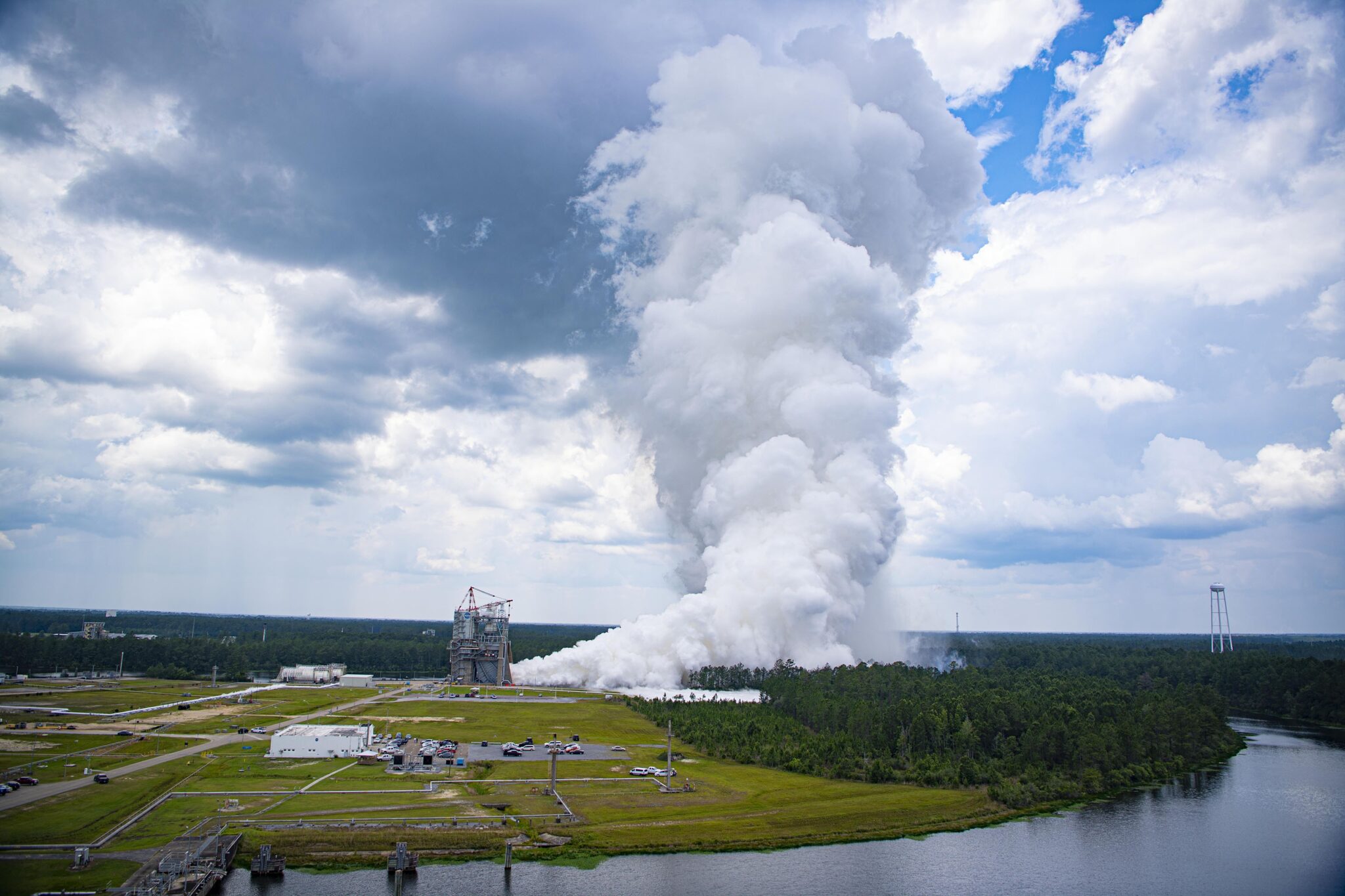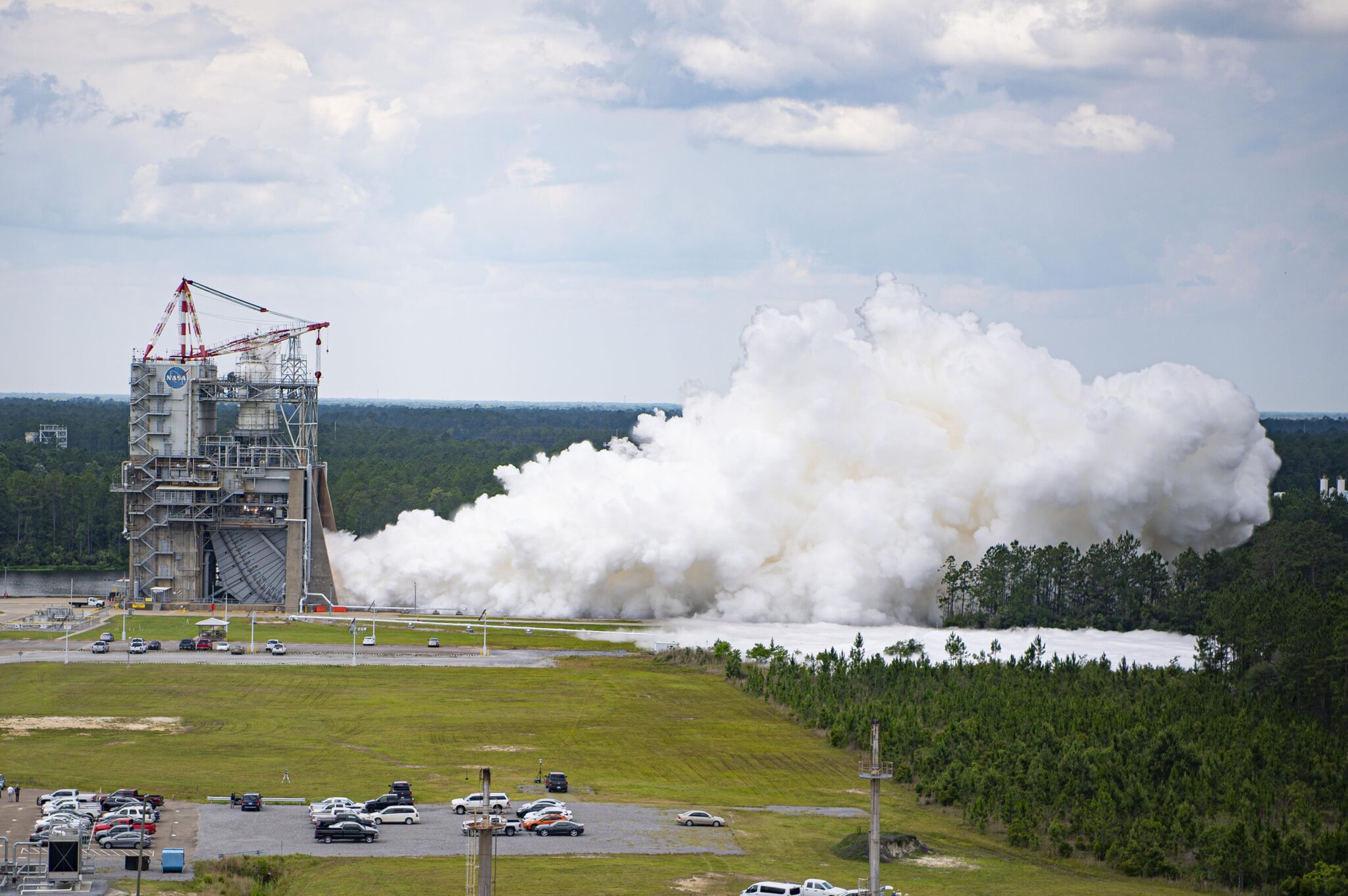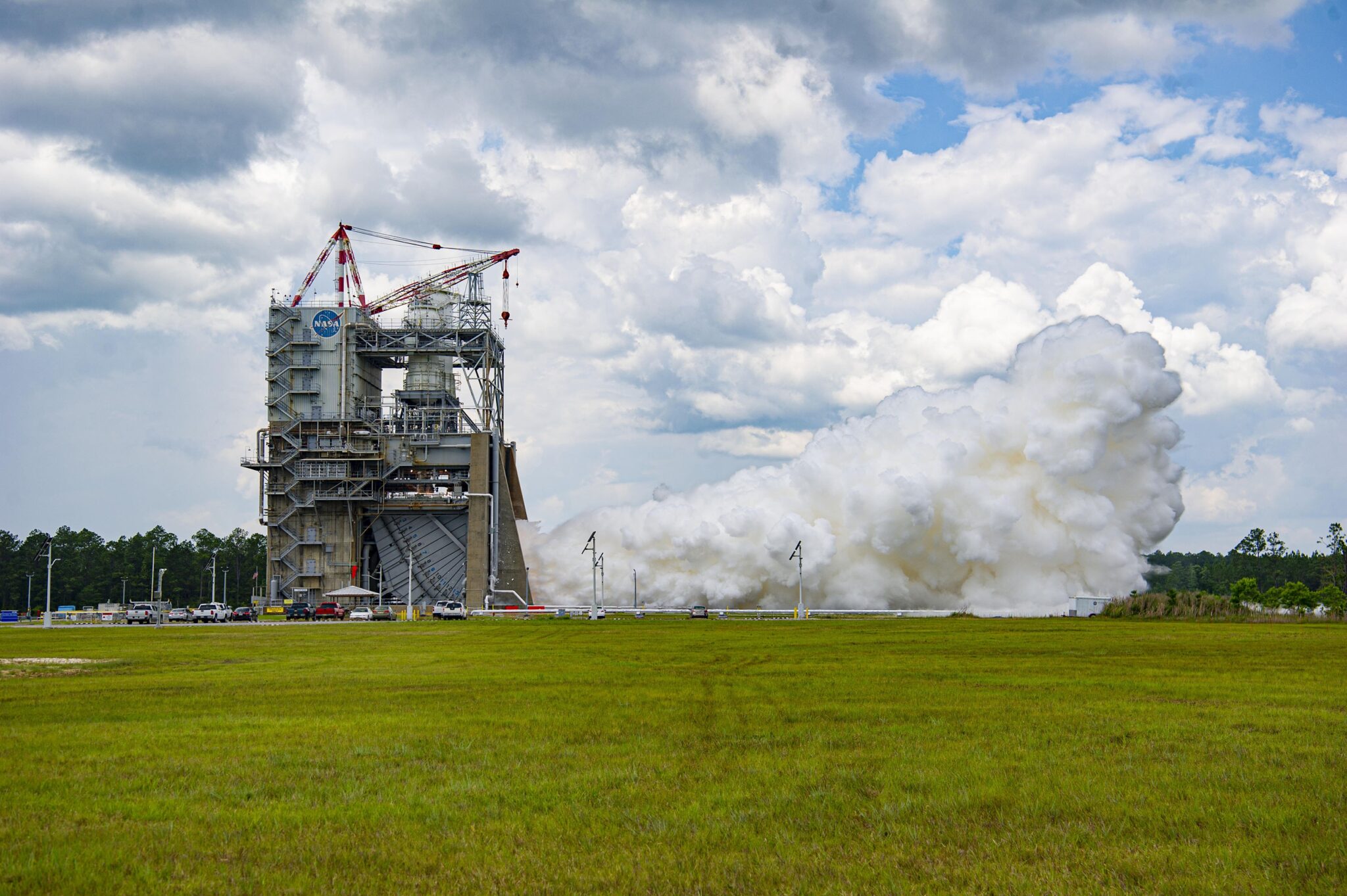NASA is testing new RS-25 engines that will power the agency’s Space Launch System (SLS) rocket in the direction of the Moon in the Artemis V mission. The latter is currently scheduled for 2029.

“NASA entered the stretch run of a key RS-25 certification engine test series with a successful hot fire, continuing to set the stage for future Artemis missions to the Moon,” the agency said in a statement on its website.
The tests involve starting the engine to check its performance. Engineers recently completed the ninth of a series of 12 tests at the Fred Haise Test Stand at NASA’s Stennis Space Center near Bay St. Louis, Mississippi. The remaining three trials are expected to be completed by the end of this month.

During the last test, the operators provided the RS-25 engine for more than eight minutes (500 seconds), which was equal to the time required to launch the SLS rocket into orbit together with the Orion manned spacecraft.
The first four Artemis missions, the first of which launched in November 2022 to test NASA’s SLS rocket and Orion spacecraft in flight around the Moon, used refurbished S-25 engines that were previously on the Space Shuttle before the program was decommissioned in 2011.

Artemis’ Future Plans
NASA is currently working with commercial and international partners to ensure a long-term presence on the moon’s surface as part of efforts to develop the technologies and capabilities needed to send humans to Mars as part of an ambitious mission that may take place in the late 2030s.
Before that, NASA plans to send the first Artemis crew to fly past the Moon in November 2024. And already in 2025, the first crew landing in five decades is planned as part of the Artemis III mission.
The Artemis IV mission also provides for the delivery of the International Habitat Module (I-HAB) for Lunar Gateway to the orbit of the Moon, as well as the landing of the crew on the Moon. Artemis V will already be put into orbit by new RS-25 engines, which will be delivered to the surface of the Moon by a lunar rover controlled by a crew of astronauts.
Earlier we reported on why a Canadian was chosen to join the Artemis II team.
According to NASA
Follow us on Twitter to get the most interesting space news in time
https://twitter.com/ust_magazine

